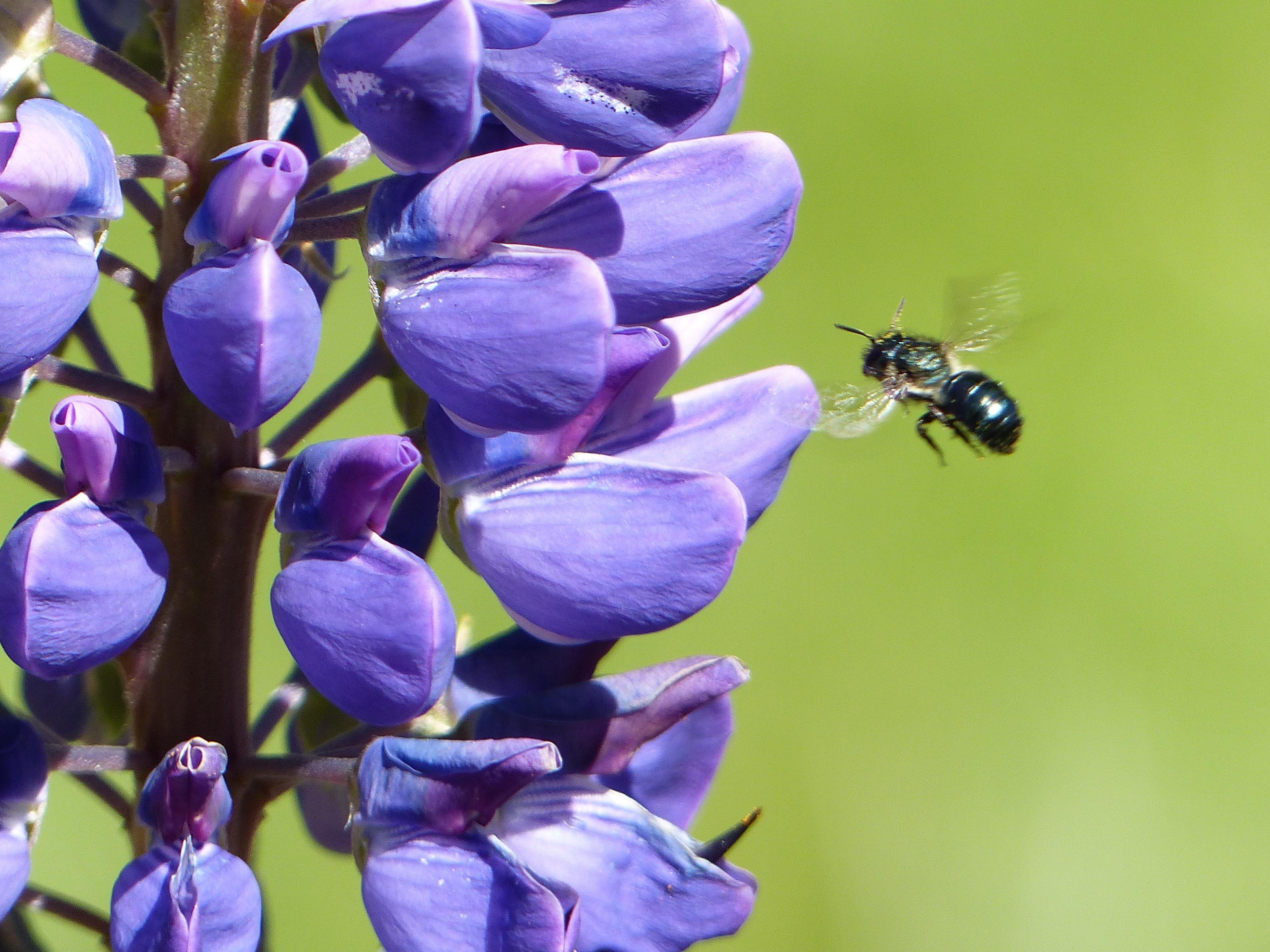
Wild bees are more abundant than cultivated bees. That's one reason they are considered important pollinators.
Jim Rivers, College of Forestry / OSU
After cutting down trees in a section of forest, logging crews can do their local bees a favor by sticking around to clear the debris and flatten the ground.
A recent study from Oregon State University suggests that removing timber harvest residue — also known as "slash" — could help wild bee populations thrive in the wake of a clearcut logging operation.
The study was led by wildlife biologist Jim Rivers, principal investigator in OSU's Forest Animal Ecology Lab. It was part of an effort to find out how the removal of slash to be used as biofuel might affect forest ecosystems — including the populations of many pollinators, like bees.
Bees have been in the spotlight recently due to concerns about pollinator shortage caused by colony collapse disorder. Cultivated bees are vital for agriculture; by some estimates, bees pollinate $15 billion worth of U.S. crops every year.
But what about wild bees? Even far from farmland, insect pollinators are responsible for fertilizing up to 90 percent of the world's flowering plants. This promotes biodiversity and creates a healthy food supply.
Of these pollinators, wild bees may be the most important. Not only are they the most abundant, they’re the only ones that feed on pollen and nectar for their entire life cycles.
“When bees are present, they’re helping to maintain plant populations, and those plants are producing fruits and nuts, which in turn support (small) mammals and up through the food chain,” Rivers said. “We call it ecosystem services.”
That’s why Rivers and his team wanted to know how land management decisions might impact wild bee populations.
To find out, Rivers turned to a managed conifer forest in western Oregon, near Springfield. From 2014 to 2015, his team assessed bee populations on 28 one-acre clearcut plots. Each plot received a different level of management, ranging from minimal slash removal and no ground compaction, to complete slash removal and total ground compaction.
Against expectations, more land disturbance — that is, removing more slash and compacting more land — appeared to give greater benefits to wild bee populations.
“It was really surprising to me the diversity that was there, and also the number that was there,” Rivers said.
Not only this, but the researchers also recorded a threefold increase in wild bee population in the second year of the study, suggesting the original population was thriving and that new bees were arriving, too.
Although 92 distinct species of bees were identified during the course of the study, the researchers found that soil-nesting varieties dominated. According to Rivers, this is normal; 70 percent of wild bee species nest in the ground.
This isn't the first time ground-nesting bees have been linked to disturbed land; sweat bees have been known to proliferate in forest patches that have recently burned.
On scorched land and in clearcuts, the absence of other varieties of bees like cavity-nesters — which make their homes in places like blackberry canes and in old beetle burrows — raises questions about the evolution of bee communities over time.
“At what point do these communities change?” Rivers wondered. How does the forest evolve after these disturbances? There has been much research on old growth forests, but the early stages of forest regeneration have received relatively little attention.
“At this point, we just don’t know,” Rivers said.
Across the United States, native bee species appear to be in decline. But Rivers and his colleagues hope their research may be able to help conservationists create more habitat for at least one kind of native bee. In clearcuts, burn sites, and other disturbed areas, these key pollinators could be a boon for the whole ecosystem, all the way up the food chain.
